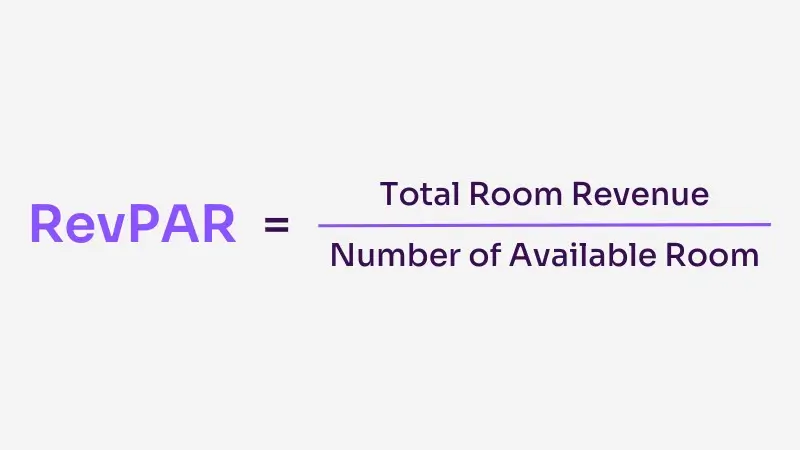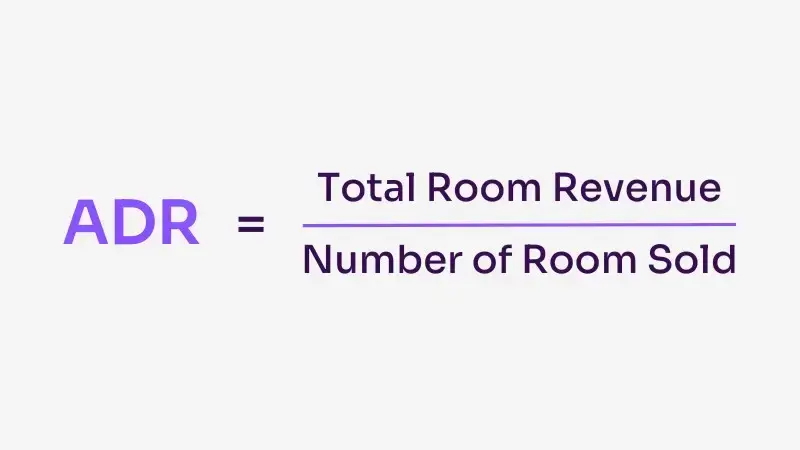RevPAR, short for Revenue Per Available Room, is a crucial metric in the hotel industry that measures a hotel's financial performance. It is calculated by dividing the total revenue earned from rooms by the number of available rooms during a specific period. Understanding RevPAR and its importance is essential for hoteliers who want to make informed decisions and maximize profitability.
What is Revenue Per Available Room (RevPAR)?
RevPAR is a key performance indicator (KPI) that provides valuable insights into a hotel's revenue generation and occupancy levels. By focusing on this metric, hoteliers can evaluate their performance relative to competitors and benchmark their progress against industry standards. RevPAR considers both the occupancy and average daily rates (ADR), providing a comprehensive overview of a hotel's financial health.
Why is RevPAR important for your hotel?
RevPAR is vital in measuring a hotel's success and financial viability. It enables hoteliers to assess their revenue stream and evaluate how effectively they utilize their available rooms. By monitoring RevPAR, hoteliers can identify trends, assess the impact of pricing strategies, and make informed decisions regarding revenue management.
Additionally, RevPAR is a critical metric for investors, lenders, and stakeholders. It is a key indicator of a hotel's financial performance and attractiveness as an investment opportunity. A high RevPAR demonstrates a hotel's ability to generate revenue and indicates potential profitability. Conversely, a low RevPAR may uncover operational inefficiencies, pricing issues, or market challenges that must be addressed.
Calculating RevPAR: formulas and considerations
RevPAR can be calculated using a simple formula: total room revenue divided by the number of available rooms. However, calculating RevPAR accurately requires careful consideration of certain factors. Seasonal variations, promotions, and other external factors that influence occupancy and average daily rates must be considered to represent a hotel's performance accurately. You may use a free RevPAR calculator to help your first time.

To calculate RevPAR, hoteliers should regularly collect and analyze relevant data, including daily room revenue, availability, and average daily rates. This data can be obtained through a property management system (PMS) or revenue management software. By monitoring changes in RevPAR over time, hoteliers can track their progress, identify patterns, and inform strategic decision-making.
RevPAR vs. ADR: what’s the difference?
While RevPAR and average daily rate (ADR) are both important metrics in the hotel industry, they provide distinct insights. ADR represents the average price at which hotel rooms are sold, excluding additional revenue streams such as food and beverages or ancillary services. ADR is calculated by dividing total room revenue by the number of rooms sold.

On the other hand, RevPAR considers both ADR and occupancy rates, providing a more comprehensive picture of a hotel's performance. RevPAR allows hoteliers to evaluate their revenue generation while considering the hotel's ability to fill available rooms efficiently.
RevPAR and ADR are indispensable metrics, and hoteliers should analyze them together to understand their hotels' financial performance and pricing strategies fully.
RevPAR Index and its importance
The RevPAR index is a powerful tool that compares a hotel's RevPAR against a competitive set or benchmark. It allows hoteliers to assess their hotel's performance relative to others and identify areas for improvement. A RevPAR index above 100 indicates that a hotel is outperforming its competitors, while a RevPAR index below 100 may indicate a need for adjustments in pricing, marketing, or operations.
By monitoring the RevPAR index, hoteliers can spot potential growth opportunities or areas where they may be losing market share. The index provides insights into a hotel's competitive positioning and facilitates strategic decision-making.
How to avoid common mistakes when calculating RevPAR
Although RevPAR is a widely used metric, certain common mistakes can distort its accuracy. One common mistake is not accounting for all revenue sources related to room sales, such as booking fees or additional charges for amenities. To ensure a comprehensive understanding of RevPAR, it is crucial to consider all relevant components when calculating this metric.
Another mistake is failing to account for changes in the number of available rooms due to renovations or temporary closures. Adjustments should be made to exclude unavailable rooms from the calculation, maintaining the accuracy of the RevPAR figure.
Avoiding these common errors while calculating RevPAR can facilitate better decision-making and accurately represent a hotel's financial performance.
Strategies to improve RevPAR
Hoteliers can implement several strategies to enhance their RevPAR and maximize revenue potential. One effective approach is optimizing pricing strategies based on demand and market conditions. By employing dynamic pricing techniques, hotels can adjust rates in real-time to reflect changes in demand, seasonality, or special events.
Focusing on revenue management practices, such as inventory control and distribution channel optimization, can also help increase RevPAR. Implementing an effective revenue management system (RMS) enables hotels to allocate inventory effectively, capitalize on high-demand periods, and control pricing across various distribution channels.
Furthermore, investing in guest satisfaction and loyalty programs can positively impact RevPAR. Satisfied guests are more likely to become repeat customers and recommend the hotel to others, contributing to increased occupancy rates and higher RevPAR.
Alternatives to RevPAR
While RevPAR is a widely used metric, it is not the only indicator of a hotel's financial performance. Alternative metrics, such as GOPPAR (Gross Operating Profit Per Available Room) and NOP (Net Operating Profit), provide additional insights into a hotel's profitability. These metrics consider revenue and operational expenses, offering a more holistic view of a hotel's financial health.
Furthermore, Total Revenue Per Available Room (TRevPAR) incorporates revenue from all hotel operations, including food and beverage, spa services, and other ancillary sources. TRevPAR provides a comprehensive measure of the hotel's revenue generation capabilities beyond room sales only.
While RevPAR remains a vital metric, exploring alternative metrics can provide a more nuanced understanding of a hotel's financial performance.
Benefits of using MarginPAR alongside RevPAR
In addition to RevPAR, Margin Per Available Room (MarginPAR) is an emerging metric that provides a deeper understanding of a hotel's financial viability. MarginPAR, also known as Profit Per Available Room, takes revenue and expenses into account to calculate each available room's profitability. This metric allows hoteliers to assess how effectively they convert revenue into profit.
By combining RevPAR and MarginPAR, hoteliers gain insights into their operations' revenue generation and profitability. This helps identify areas for cost reduction, efficiency improvement, and enhanced profit margins.
Leveraging both RevPAR and MarginPAR simultaneously enables a more comprehensive evaluation of a hotel's financial performance, enhancing decision-making capabilities.
Final thoughts
RevPAR is a crucial metric for hoteliers to evaluate their financial performance, benchmark against other properties, and make informed decisions. By accurately calculating RevPAR and understanding its implications, hoteliers can implement effective revenue management strategies and drive profitability.
Additionally, exploring alternative metrics and combining them with RevPAR provides a more comprehensive evaluation of a hotel's financial health. With the right understanding and analysis of RevPAR, hoteliers can optimize revenue generation and position their hotels for long-term success in a competitive industry.